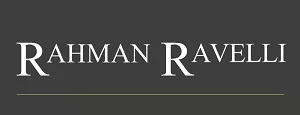With a financier being jailed for a huge art fraud, Angelika Hellweger of financial crime specialists Rahman Ravelli outlines why the art world is vulnerable to such activity.
A London-based financier has been jailed for 20 months in the US for his role in an art fraud involving $86 million.
Robert Newland was sentenced in a New York court for helping fraudster Inigo Philbrick carry out the scheme to deceive art collectors, investors and lenders.
Newland, aged 46, had pleaded guilty last year to a count of wire fraud conspiracy. He had admitted aiding Philbrick for two years, ending in 2019. Newland did this by using his professional standing - including a degree from the London School of Economics and consulting experience at Christie's auction house - to give credibility to a scheme which saw Philbrick lie about the ownership and authenticity of works of art in order to gain access to and steal large amounts of money.
Newland admitted using fake invoices and other bogus documents to trick Philbrick's investors, most of whom are unlikely to recover the money they lost in the fraud.
Prosecutors said that Newland was involved in about half of Philbrick's fraudulent activity, which they described as one of the most significant frauds in art marketing history. But Newland made little money from his criminal activity. When sentenced he was only ordered to forfeit $76,000 in cash and three artworks. He had been extradited to the US in September 2022, where he entered a quick guilty plea. Philbrick, 36, was sentenced to seven years in prison last year.
This case is not unique. There have been a number of cases involving fraud and the art world. This is down to two main factors. The first is the huge amounts of money that are circulating in the art world at any given time, with investors who have very deep pockets always on the look-out for the next piece that they can purchase. The second is the ease with which art can be sold online, with a lack of transparency and regulations.
For those looking for opportunities for fraud, such factors make the art world a very appealing place. The combination of many people looking to spend large amounts of money and very few checks on transactions acts as a magnet for those seeking illegal gains.
The US is a prime example of the lack of regulation. Although the US is generating 45% of the global art market's value - and is one of the world's most significant nations for art buyers – the anti-money laundering provisions in the US Bank Secrecy Act do not apply to art transactions facilitated by art dealers or auction houses.
The supposed mystery that surrounds the art world adds to the problem. High-value works of art often change ownership secretively and on the basis of a handshake, without proper due diligence being carried out and with nobody being keen to ask what may appear to be “difficult” questions. This obviously plays into the hands of criminals – many of whom are acutely aware that art crimes are notoriously difficult to prosecute and rarely end up in lengthy prison sentences.
The content of this article is intended to provide a general guide to the subject matter. Specialist advice should be sought about your specific circumstances.

